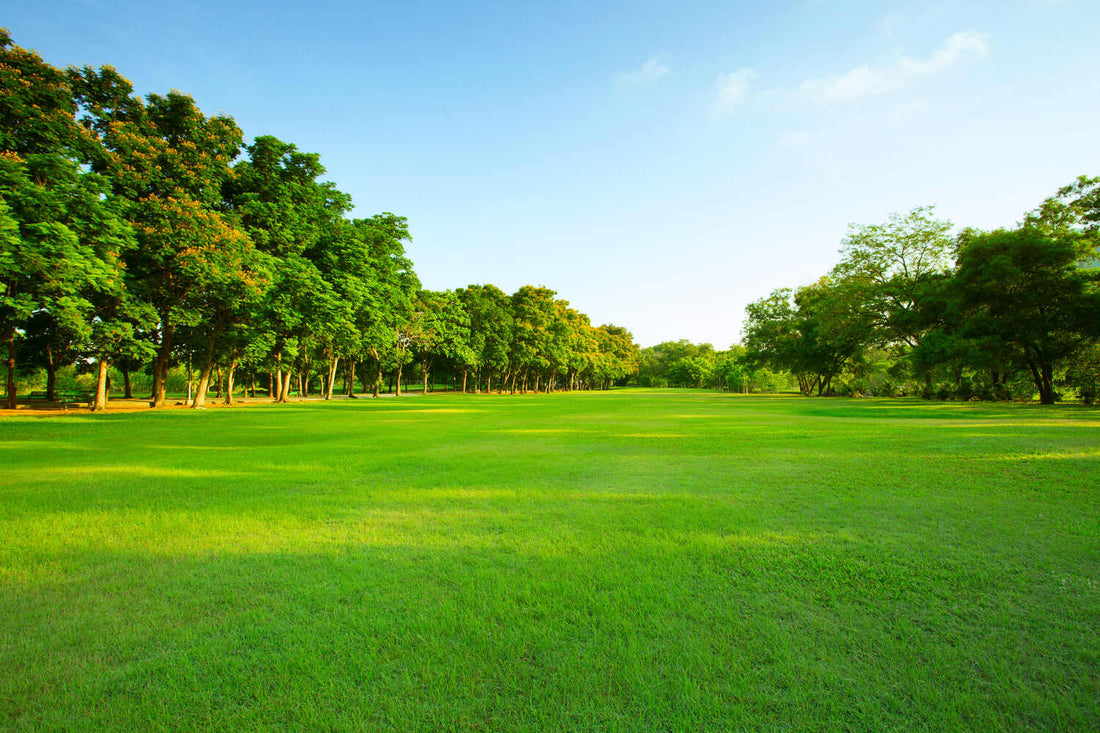If you've ever wondered when to fertilize lawn in Florida, you've come to the right place. Knowing the right time to fertilize can make all the difference between a healthy, vibrant yard and one that struggles to thrive.
As trusted experts in lawn care, we know that timing is crucial, but it's not the only factor to consider. In this article, we'll dive into the best times to fertilize your lawn, what factors to keep in mind, and how local conditions can influence your lawn care routine.
So, if you're ready to unlock the secrets to a lush, green lawn that will be the envy of your neighborhood, continue reading.
What this article covers:- Factors to Consider When Fertilizing Your Florida Lawn
- Calculate the Right Amount to Apply
- The Best Lawn Fertilization Schedule for Florida
Factors to Consider When Fertilizing Your Florida Lawn
Fertilizing your lawn in Florida isn't just about grabbing a bag of fertilizer and spreading it. There are important factors to consider that will determine your success.
Fertilize During The Growing Season
Based on our observations, the best time to fertilize your lawn is during the growing season when your grass is actively growing and can fully absorb nutrients.
In Florida, this typically means fertilizing in spring,summer, and fall. These warmer months provide the ideal conditions for your lawn to take in the fertilizer and promote healthy growth.
Applying lawn fertilizer during the growing season ensures that your lawn receives the necessary nutrients to thrive, leading to that lush, green appearance you desire.
Remember, when the grass is actively growing, it's primed to make the most of the fertilizer, so timing is key to success.
Choose Your Maintenance Plan
Your lawn care routine should include regular fertilization to maintain its health and appearance. How often you fertilize depends on your maintenance plan and the specific needs of your lawn.
From our experience, a slow-release fertilizer, such as our professional 10-0-20 Emerald Fertilizer, applied every 6-7 weeks, can keep your lawn in top shape.
This specialized fertilizer blend supports the healthy growth of new lawns, and sod by providing a balanced nutrient ratio of 10% Nitrogen & 20% Potassium..
We've included slow-release nitrogen and iron to ensure grass is consistently fed and maintains a dark green color. Additionally, this formula contains GreenTRX, a proprietary blend of natural and organic ingredients that improves soil health and promotes strong root growth.
While this schedule works for most lawns, always adjust the frequency of applications based on how your grass responds to ensure optimal results.
Consider Your Location
Florida's varied climate means different regions require different fertilization approaches.
In South Florida, the mild winters allow lawns to handle fertilization year-round, making it easier to maintain lush, healthy grass.
The absence of frost means that grass can continue to grow, although adjustments should be made for the wet and dry seasons.
On the other hand, in North Florida, where temperatures drop during winter, lawns may need a break from fertilization during the colder months and we suggest our 0-0-7 Safeguard pre-emergent to prevent weeds from germinating..
The growing season is shorter, and timing is crucial to avoid over-fertilizing or wasting resources when the grass is dormant. Always consider your specific location to optimize your fertilization plan.

Lawn Care in Counties With Fertilizer Ordinances
It's crucial to be aware of local regulations when planning your lawn care routine. Many counties in Florida have specific fertilizer ordinances in place that restrict fertilization during certain times of the year, especially to prevent runoff into waterways during the rainy season.
These rules are designed to protect the environment and reduce the impact of excess nutrients on water quality. We have developed a special blend containing only micronutrients to help keep your lawn green and healthy. Apply 0-0-4 Nutrigreen if you are located in a nitrogen blackout area.
To avoid fines and environmental damage, always check the rules in your area before applying any fertilizer.
Being informed about local regulations will help you maintain a healthy lawn while also complying with the law.
Don't Fertilize If There's Rain Coming
As trusted experts, we know that timing your fertilization around the weather is crucial to ensuring your lawn absorbs the nutrients it needs.
Fertilizing right before heavy rain or tropical storm can lead to nutrients being washed away before they have a chance to be absorbed, which not only wastes fertilizer but also risks polluting nearby water sources.
This runoff can contribute to environmental problems like algal blooms in local waterways. To avoid these issues, always check the weather forecast before you fertilize.
If heavy rain is expected, it's best to wait until conditions are dry enough for your lawn to fully benefit from the fertilization.

Irrigation
Your lawn needs consistent moisture for the fertilizer to work effectively. Proper irrigation ensures that the nutrients from the fertilizer reach the roots, promoting strong and healthy grass growth.
Setting up your irrigation system correctly is key—watering deeply and infrequently helps keep your lawn hydrated without causing waterlogging.
This balance allows the fertilizer to be absorbed by the soil, preventing nutrient runoff and encouraging deeper root development.
Regularly check your system to ensure even coverage and adjust as needed based on weather conditions. This attention to irrigation will maximize the effectiveness of your fertilization efforts and keep your lawn thriving.
Calculate the Right Amount to Apply
Applying the right amount of fertilizer is essential for achieving a healthy lawn. Too little won't provide the necessary nutrients your grass needs to thrive, while too much can lead to fertilizer burn, which damages your lawn and makes it more susceptible to pests, weeds, and disease.
To avoid these issues, always follow the instructions provided on the fertilizer package and adjust the application based on the size of your lawn.
Proper measurement ensures that your lawn receives the optimal amount of nutrients without wasting product or causing harm. Taking the time to calculate the correct amount will set your lawn up for long-term success.

The Best Lawn Fertilization Schedule for Florida
A well-planned fertilization schedule is key to maintaining a healthy lawn in Florida's unique climate. Here's what we recommend:
- Spring: Apply the first round of fertilizer with pre-emergent in early spring to kick-start growth. This is when your lawn begins to wake up from the winter months, and it needs a boost to start growing vigorously.
- Summer: Continue fertilizing every 6-8 weeks throughout the summer. During these warmer months, your grass will be growing actively, so regular feeding will help maintain its health and lush appearance.
- Fall: Apply another round of fertilizer with pre-emergent in the fall. This helps your lawn store up nutrients for the cooler months and prepares it for the next growing season.
If you're wondering when to fertilize zoysia grass in Texas, similar warm-season grass care principles apply. However, always consider the regional differences in climate to adjust your fertilization schedule accordingly.
Conclusion
Fertilizing your lawn at the right time is key to unlocking that lush, healthy yard you've been dreaming of.
Whether it's adjusting to your lawn's growth cycle, accounting for regional differences, or adhering to local regulations, giving your grass exactly what it needs can make all the difference.
At Lawn Synergy, we're committed to helping you achieve these results with expert advice and top-quality products designed for your success.
Ready to transform your lawn? Trust Lawn Synergy to guide you every step of the way with products and solutions tailored to your lawn's unique needs.
If you want to learn more, why not check out these articles below:
- When to Fertilize Lawn in Michigan
- When to Fertilize Lawn in NC
- When to Fertilize Lawn Indiana
- How Does Grass Grow?
- How Much Fertilizer for Lawn?
- Will Fertilizer Kill New Grass?
- How to Grow Grass Quickly in Summer
- How to Grow Bermuda Grass
- How to Grow Grass an a Slope
- What Happens If You Apply Fertilizer to Wet Grass?
- What Does Fertilizer Do for Grass
- Best Fertilizer to Make Grass Green
- Will Fertilizer Burn Grass If Not Watered
- What Lawn Fertilizer Is Safe for Well Water
- When to Fertilize New Grass Seed


